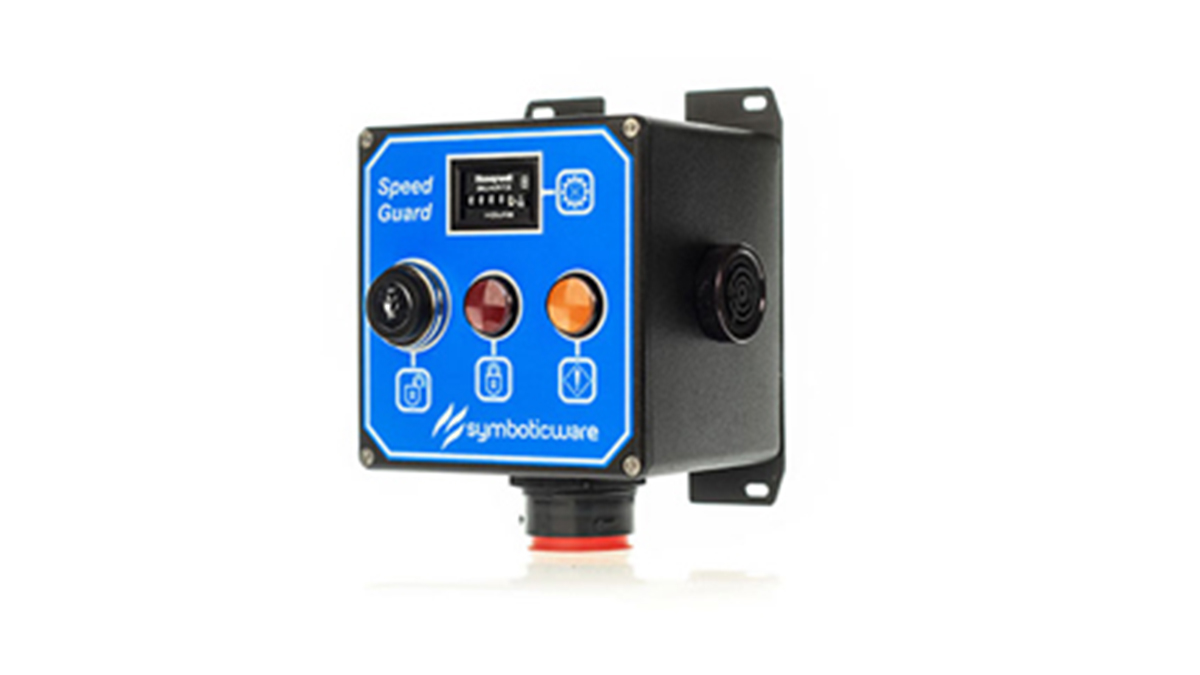Taking It Slower
Taking It Slower
New controller designed to increase safety, mobile equipment uptime by preventing overspeeding
By communicating directly with a vehicle’s engine and drivetrain electronic control module (ECM), Symboticware’s new Speed Guard controller is designed to keep mobile equipment operators from overspeeding during their shifts, thereby increasing mine safety and machine uptime, said the company.
Mobile equipment is usually restricted to 25 mph or less on mine sites. Exceeding posted speeds is dangerous and often grounds for dismissal, and it’s typically been prevented through use of governors or by locking out gears.
Tenacious operators will still find a way. With production bonuses on the line, they’ll shift into neutral when descending a ramp and freewheel to the bottom. With the transmission screaming and engine idling, a haul truck might hit 45 mph for several minutes. Mine supervisors typically learn about the method’s popularity after several transmissions and other major components have been destroyed.
Last year, a Canadian mining and construction equipment dealer went in search of a solution. “Toromont Cat was responding to a customer need,” said Kirk Petroski, president and CEO, Symboticware, Sudbury, Ontario, Canada, a technology company that specializes in standardized information-based products for mobile mining equipment. Its core product is the SymBot, introduced in 2010, which records and sends data from equipment to central control stations.
“A mine was having problems with its equipment and wanted to determine whether it was poor operator behavior or faulty parts that were causing premature component failure,” Petroski said. “Through data analysis they could see that overspeeding was occurring at a high level. The mine wanted a way to stopthe act — beyond telling drivers to slow down. Speed Guard has the ultimate lockout mechanism if operators don’t change their behavior.”
The solution is composed of an operator panel mounted in the cab and the controller connected to the engine/powertrain ECM. It can be installed on most existing machines in less than five hours, Petroski said. It is designed to monitor vehicle ground speed and engine rpm and gives the operator a visual and audible alarm when a preset speed is reached.
After the alarm is triggered, the operator must slow down within a preconfigured time before the vehicle goes into a preset governed condition that essentially derates the engine. Once that happens, the vehicle will be able to get out of harm’s way, but the operator will need to get a supervisor to unlock and reset the system.
Petroski said the system also includes an accurate runtime meter. “Current meters are based on engine hours whether the machine is at idle or not,” he said. “Our system looks at wheel speed, engine rpm and park brake release to drive the hour meter so it is recording actual operating production time excluding idle hours. The product can also differentiate between remote or manual operation.”
Speed Guard will also communicate with the SymBot system. Petroski has compared the latter product to a smartphone, as specific functions can be easily installed into the platform. “Part of our road map with the SymBot is to build data applications that plug into it,” he said. “We started with engine monitoring and then added preoperation checklists, production statistics, tire pressure monitoring, load weight, and emissions monitoring.
“Speed Guard is another product in that direction. Once integrated into SymBot, it allows underground mine operators to send data to surface and reset the system from an office as well.”
Speed Guard does not require a SymBot system to be installed on a machine to function, although having both can make “good business sense to a maintenance manager or production supervisor,” Petroski said. “They can use Speed Guard to easily address a specific need, and if they want to send that data off of the machine they can install the communication platform.”
Petroski said Toromont Cat’s customer currently has 30 units installed and plans to make Speed Guard standard on all of its scoops and haul trucks, which can involve as many as 75 different machines.
The dealership is a reseller for the Speed Guard within its territory in Canada. Initially designed and available for Caterpillar equipment, it can be adapted to other OEM equipment with certain modifications. “Manufacturers can work directly with Symboticware to get it configured for their equipment,” Petroski said. The company is also seeking channel partners in other regions not serviced by Toromont Cat.
BY CHAD ELMORE
